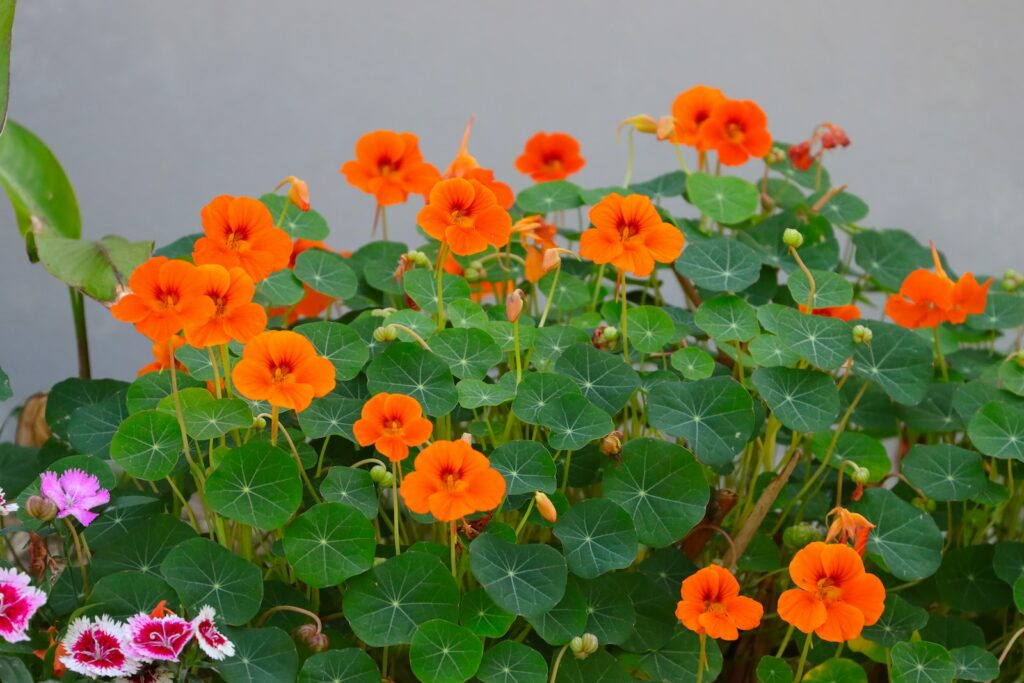
Nasturtiums are a popular choice for gardeners due to their vibrant colors, ease of care, and versatility. However, not all plants are compatible with nasturtiums and can negatively impact their growth. In this article, we will explore what not to plant with nasturtiums.
One plant to avoid planting with nasturtiums is fennel. Fennel is known for its strong aroma and can release chemicals that inhibit the growth of other plants, including nasturtiums. Similarly, planting dill with nasturtiums can also negatively impact their growth due to the release of chemicals.
Another plant to avoid planting with nasturtiums is brassicas, such as broccoli, cauliflower, and cabbage. These plants are known for attracting pests, such as aphids and cabbage worms, which can also affect nasturtiums. Additionally, brassicas and nasturtiums have similar nutrient requirements, which can lead to competition for resources and stunted growth.
Table of Contents
Understanding Nasturtiums
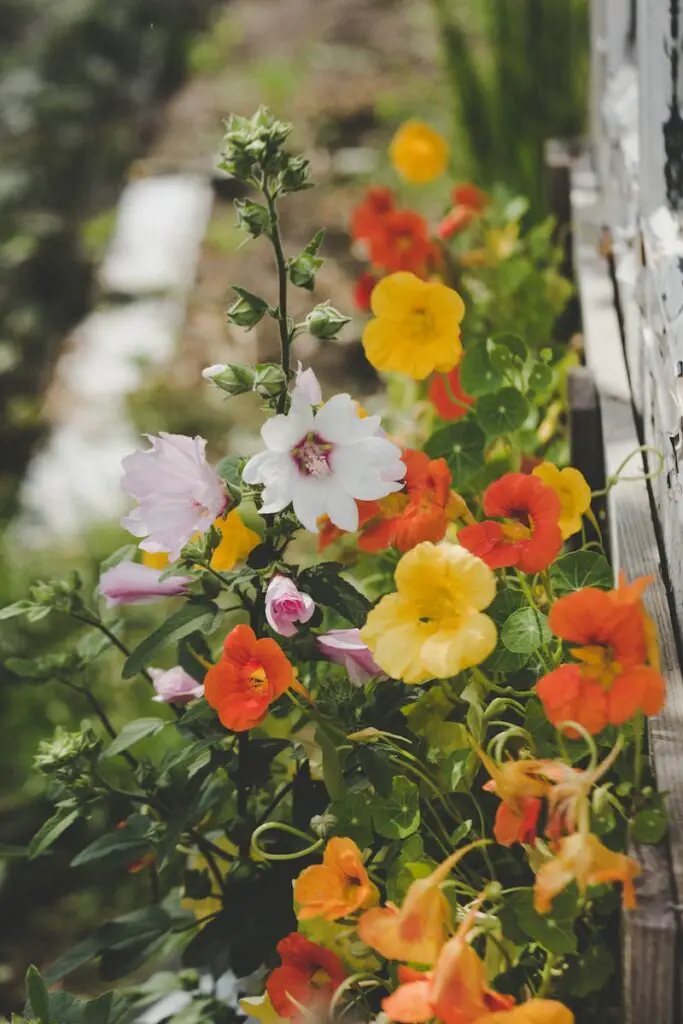
Nasturtiums are annual plants with edible flowers and leaves. They come in a variety of colors, including yellow, orange, and red. Nasturtiums are easy to grow and can be used in a variety of ways, such as in salads or as a garnish.
There are several varieties of nasturtiums, including the Empress of India and climbing types. Dwarf varieties are also available. Nasturtiums can be grown in containers or in the ground, and they prefer well-drained soil and full sun.
Nasturtiums are known for their bright, vibrant colors and can add a pop of color to any garden. However, it is important to consider what not to plant with nasturtiums. Nasturtiums can be sensitive to certain plants, such as brassicas, which can attract pests that can damage the nasturtiums.
In addition, it is important to avoid planting nasturtiums with other plants that have similar growing requirements, such as plants that prefer full sun and well-drained soil. This can lead to competition for resources and can stunt the growth of the nasturtiums.
Overall, understanding the growing requirements and sensitivities of nasturtiums can help ensure a successful and vibrant garden.
Growing Conditions for Nasturtiums
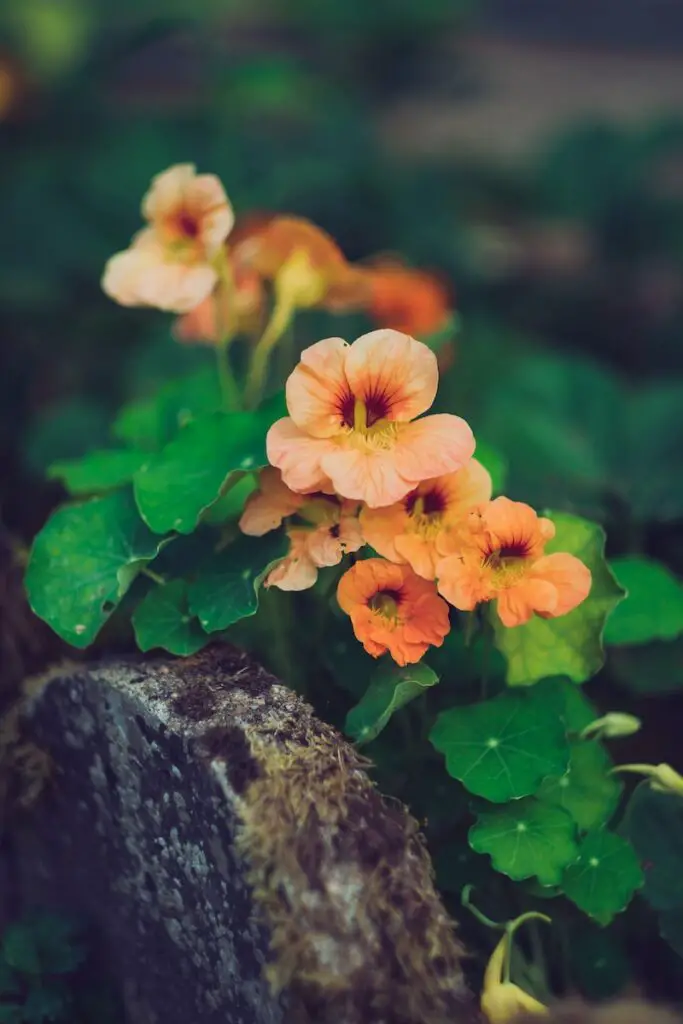
Nasturtiums are easy to grow and require minimal care, making them a popular choice for gardeners of all levels. However, there are certain growing conditions that are optimal for these plants to thrive.
Soil
Nasturtiums prefer well-drained soil that is rich in organic matter. They can tolerate a range of soil types, but they do best in soil that is slightly acidic with a pH of 6.0 to 7.0. It is important to avoid soil that is too wet or compacted, as this can lead to root rot.
Sunlight
Nasturtiums prefer full sun, but they can also tolerate partial shade. If planting in a hot climate, it is best to provide some shade during the hottest part of the day to prevent the leaves from burning.
Water
Nasturtiums require regular watering, especially during the hot summer months. It is important to keep the soil moist but not waterlogged, as this can lead to root rot. Watering in the morning or evening is best to avoid evaporation during the heat of the day.
Seeds and Seedlings
Nasturtiums can be grown from seeds or seedlings. If starting from seeds, it is best to plant them directly in the garden in the spring after the last frost. If starting from seedlings, it is important to transplant them carefully to avoid damaging the roots.
Overall, nasturtiums are a great addition to any garden and can add a pop of color and texture to your landscape. By following these growing conditions, you can ensure that your nasturtiums will thrive and provide beauty for many seasons to come.
Companion Planting with Nasturtiums
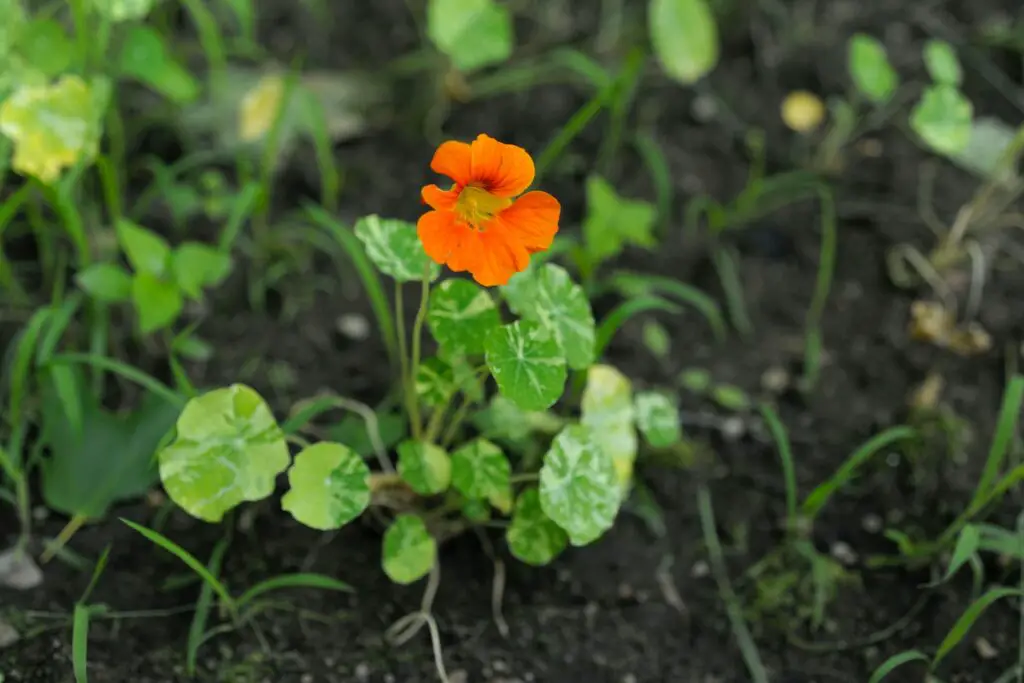
Nasturtiums are a popular choice for companion planting in vegetable gardens. They are easy to grow, have bright flowers, and can help deter pests. However, it’s important to know what not to plant with nasturtiums to avoid any negative effects on your garden.
When it comes to companion planting, it’s all about finding plants that have a mutually beneficial relationship. Nasturtiums are known to repel certain pests, such as aphids and whiteflies, while attracting beneficial insects like ladybugs and bees.
Here are some plants that are compatible with nasturtiums:
- Cabbage: Nasturtiums can help repel cabbage moths, which can damage cabbage plants.
- Squash: Nasturtiums can help deter squash bugs and beetles.
- Peppers: Nasturtiums can attract predatory insects that feed on pests that attack pepper plants.
- Cucumbers: Nasturtiums can help repel cucumber beetles.
- Beans: Nasturtiums can help repel aphids and bean beetles.
- Tomatoes: Nasturtiums can attract predatory insects that feed on pests that attack tomato plants.
On the other hand, here are some plants that should not be planted with nasturtiums:
- Radish: Nasturtiums can stunt the growth of radish plants.
- Lettuce: Nasturtiums can attract aphids that can damage lettuce plants.
- Corn: Nasturtiums can attract corn earworms.
- Eggplants: Nasturtiums can attract flea beetles that can damage eggplant plants.
- Potatoes: Nasturtiums can attract aphids that can damage potato plants.
Overall, nasturtiums can be a great addition to your vegetable garden as a companion plant. Just be sure to avoid planting them with certain vegetables that may not be compatible.
Benefits of Nasturtiums in the Garden
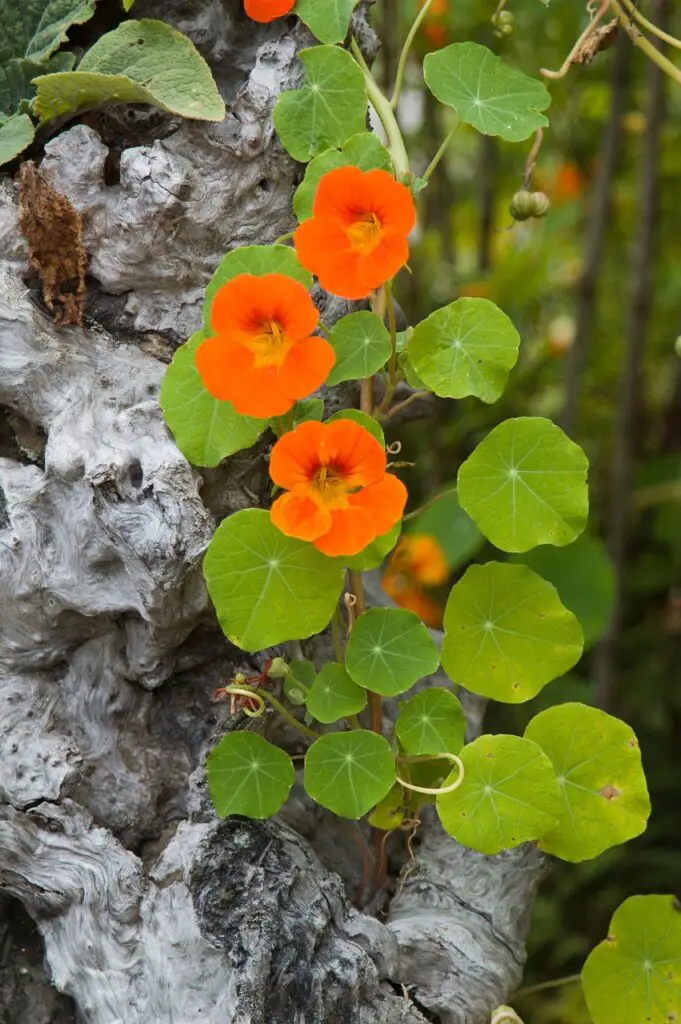
Nasturtiums are an excellent addition to any garden, as they offer a range of benefits that can help improve the health and productivity of other plants in the area. Here are some of the key benefits of planting nasturtiums:
- Natural Pest Control: Nasturtiums are known to repel aphids and other garden pests, making them an excellent natural pest control option. They also act as a trap crop, attracting pests away from other plants in the garden.
- Beneficial Insects: Nasturtiums attract beneficial insects such as ladybugs and lacewings, which prey on garden pests like aphids. This can help reduce the need for chemical pesticides in the garden.
- Pollinator Attraction: Nasturtiums are also attractive to pollinators such as bees and butterflies, which can help increase the yield of other plants in the garden.
- Ground Cover: Nasturtiums can be used as a ground cover to help suppress weeds and retain moisture in the soil. They also add a splash of color to the garden, making it more visually appealing.
- Edible Herbs: Nasturtium leaves and flowers are edible and can be used in salads or as a garnish. They have a slightly peppery taste and are rich in vitamin C.
Overall, planting nasturtiums in the garden can provide a range of benefits that can help improve the health and productivity of other plants in the area.
What Not to Plant with Nasturtiums
While nasturtiums are a great addition to any garden, it’s important to know what not to plant with them to ensure they grow and thrive. Here are a few plants to avoid planting with nasturtiums:
Broccoli
Broccoli is a member of the brassica family, which includes cabbage, cauliflower, and kale. These plants release chemicals that can stunt the growth of nasturtiums. It’s best to plant nasturtiums away from these plants or wait until after the brassicas have finished growing before planting nasturtiums in the same spot.
Cauliflower
Like broccoli, cauliflower is a brassica and can release chemicals that can harm nasturtiums. It’s best to avoid planting them together or plant them at different times.
Kale
Kale is another member of the brassica family and can have the same negative effect on nasturtiums. It’s best to plant them separately or at different times.
Sage
Sage can release chemicals that can stunt the growth of nasturtiums. It’s best to plant them separately or at different times.
Mint
Mint can be invasive and can quickly take over an area of the garden. It’s best to plant nasturtiums separately or in a container to prevent mint from taking over.
By avoiding planting these plants with nasturtiums, gardeners can ensure that their nasturtiums grow and thrive without any negative effects.
Nasturtiums and Containers
Nasturtiums are a popular choice for gardeners due to their vibrant colors and easy-to-grow nature. However, when it comes to planting them in containers, there are a few things to keep in mind.
Containers are a great option for growing nasturtiums, especially if you have limited space or want to add some color to your patio or balcony. However, it’s important to choose the right container for your nasturtiums.
Pots or containers that are too small can restrict the growth of the plant and lead to stunted growth or even death. On the other hand, containers that are too large can lead to overwatering and poor drainage, which can also harm the plant.
When choosing a container for your nasturtiums, make sure it has adequate drainage holes and is the right size for the plant. A good rule of thumb is to choose a container that is at least 12 inches in diameter and 10 inches deep.
Window boxes and hanging baskets are also great options for growing nasturtiums, as they can add some color to your windows or hanging from your porch. Just make sure to choose a container that is the right size for your plant and has adequate drainage.
Trellises can also be used to grow nasturtiums, but it’s important to choose a trellis that is sturdy enough to support the weight of the plant. Indoor growing is also possible, but it’s important to provide adequate light and humidity for the plant to thrive.
In summary, when planting nasturtiums in containers, make sure to choose the right size and type of container for your plant. With the right care and attention, your nasturtiums can thrive in containers and add some color to your home or garden.
Culinary Uses of Nasturtiums
Nasturtiums are not only beautiful flowers, but they are also edible and have a unique peppery flavor. They can be used in a variety of ways in the kitchen, from salads to pickled snacks.
The leaves and flowers of nasturtiums are both edible. The leaves have a slightly bitter taste, while the flowers are sweeter and milder. The flowers can be used as a garnish or added to salads for a pop of color.
Nasturtium leaves can be used in salads, sandwiches, or as a substitute for lettuce in wraps. They add a peppery flavor and a bit of crunch to any dish.
One of the most popular ways to use nasturtiums in the kitchen is to pickle the unripe seed pods. The pickled pods are often used as a substitute for capers. They have a similar taste and texture and add a tangy flavor to dishes.
Another way to use nasturtiums is to infuse their flavor into vinegar or oil. This can be done by adding nasturtium leaves or flowers to a jar of vinegar or oil and letting it sit for a few days. The resulting vinegar or oil can be used in salad dressings or as a marinade for meats.
Overall, nasturtiums are a versatile and flavorful addition to any kitchen. Their edibility and unique flavor make them a great choice for those looking to experiment with new ingredients.
Nasturtium Care and Maintenance
Nasturtiums are easy to grow and care for, making them a popular choice among gardeners. Here are a few tips for maintaining healthy and vibrant nasturtium plants.
Water
Nasturtiums require regular watering, especially during hot and dry weather. However, overwatering can cause root rot and other problems. It’s best to water the plants deeply once a week, allowing the soil to dry out slightly between watering sessions.
Fertilizer
Nasturtiums don’t require a lot of fertilizer, but they do benefit from a light feeding every few weeks during the growing season. A balanced fertilizer with equal amounts of nitrogen, phosphorus, and potassium is ideal. Avoid using high-nitrogen fertilizers, as they can lead to excessive foliage growth at the expense of flowers.
Growing Nasturtium
Nasturtiums are easy to grow from seed and can be sown directly in the garden after the last frost. They prefer well-draining soil and full sun, but can tolerate some shade. The seeds should be planted 1/2 inch deep and 10-12 inches apart. Nasturtiums can also be grown in containers or hanging baskets.
Tropaeolum
Nasturtiums belong to the genus Tropaeolum, which includes around 80 species of annual and perennial plants. The most common species is Tropaeolum majus, which is the species typically grown in gardens.
Height
Nasturtiums can grow up to 12 inches tall and 18 inches wide, depending on the variety. Dwarf varieties are available for smaller spaces.
Yield
Nasturtiums are primarily grown for their colorful flowers, but the leaves and flowers are also edible and can be used in salads, sandwiches, and other dishes. The plants can produce a large number of flowers over the course of the growing season, making them a great addition to any garden.
Additional Tips for Nasturtiums
Nasturtiums are a great addition to any garden, but it’s important to know what not to plant with them. Here are some additional tips to help you grow healthy and vibrant nasturtiums:
- Nasturtiums grow well in bush form, so avoid planting them near tall plants or climbing vines that could overshadow them.
- Nasturtiums are hardy in zones 2-11, so make sure to check your climate zone before planting.
- Nasturtiums are susceptible to weeds, so make sure to weed regularly around them to prevent competition for nutrients and water.
- While marigolds are often recommended as a companion plant for nasturtiums, it’s important to note that some marigold varieties can actually inhibit the growth of nasturtiums. Stick to varieties like French marigolds or signet marigolds, which are more compatible with nasturtiums.
- Petunias, melons, and peppers are not recommended to be planted with nasturtiums, as they can attract pests that may harm the nasturtiums.
By following these additional tips, you can ensure that your nasturtiums thrive in your garden.